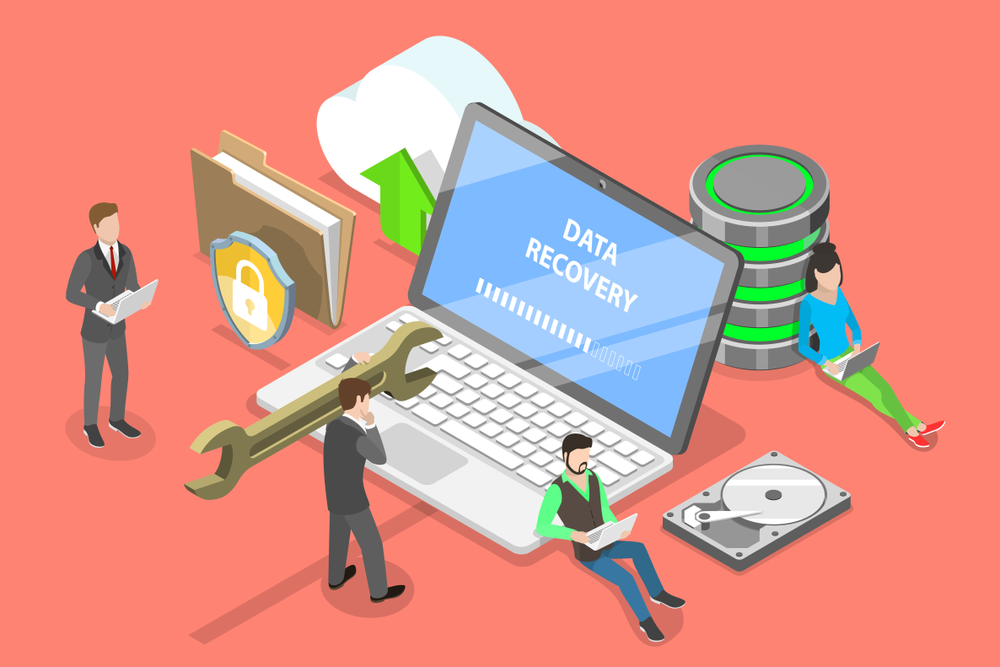Successful data recovery has many elements, and these must work on all cylinders to be sure your business recovers from a disaster without suffering unacceptable consequences. Unfortunately, many businesses are not adequately prepared for a disaster because they make these data recovery mistakes.
Not backing up your storage or server
It is imperative that every business, regardless of size, back up its systems and data. Your business will inevitably experience an event that can destroy your production systems and data. It will happen because of the variables involved - whether it be a cyberattack, natural disaster, human error, hardware malfunction, software glitch, or power outage. And permanent data loss can shut down your business.

Backup data is not stored offsite
Backing up your data with just one copy will not fully protect your business because that backup can easily be lost or destroyed. For example, if you store your backup in the same facility as your systems, you can lose both due to a flood or fire that destroys your facility. Likewise, by storing your backups locally, cybercriminals can attack your systems and backups simultaneously. Every business should follow the 3-2-1 backup rule: keep your data in three places (a production copy and two backups), across two media, with one backup stored offsite, such as in the cloud.
Using outdated backups when restoring
Back up your systems, applications, and data based on business priorities and recovery point objectives (RPOs). RPO is the amount of data – measured in time – that you are willing to lose after a disaster. If your business can afford to lose 24 hours’ worth of data, you should back up your data every three days, assuming an eight-hour business day. Alternatively, if you can only afford to lose eight hours of data, you should back up every day. Tier RPOs by mission-critical requirements – what might be acceptable for human resources might not be for finance or sales. Remember, lost data means more work for your employees to re-enter the data, and in some cases, it can be unrecoverable.
Performing tasks beyond your capabilities
Recovering your systems and data can be complicated or near impossible if you attempt to recover manually during a disaster. You do not want human error causing more problems and impacting your recovery time. Individuals responsible for aspects of recovery may be unavailable as they concentrate on keeping themselves and family members safe. It is easy for mistakes to happen if you rely on other employees to recover systems in the right order so they work correctly. Automation and proper data recovery software become critical to keeping your business going in the event of a disaster.
Not using proper data recovery software
Just as important as backup is your ability to effectively recover from a data loss incident. Each business has different requirements for how long it can go without its data. This timeframe is called recovery time objective (RTO).
RTO is the amount of time in which your organization must restore systems and data to continue business operations without suffering unacceptable consequences. If your RTO for mission-critical applications is eight hours, that means you need these applications and data available within eight hours of the disaster. To accomplish this, you need disaster recovery (DR) orchestration to ensure that servers, applications, and their dependencies come online in an automated, prioritized manner within that timeframe.
Disaster recovery systems do the orchestration for you by automatically failing your production systems over to secondary systems in time to meet your RTOs and failing back to the production system if/when that system is back up and running.
Acronis’ revolutionary approach to data protection
You can avoid making these mistakes with Acronis Cyber Protect (includes Acronis Cyber Backup), a revolutionary approach to cyber protection. By integrating data protection with cybersecurity, Acronis Cyber Protect (includes Acronis Cyber Backup) eliminates complexity, delivers better protection against today’s threats, and maximizes efficiency by saving time and money. Acronis Cyber Protect (includes Acronis Cyber Backup) includes:
- Cybersecurity and endpoint protection management, including vulnerability assessments, patch management, remote desktop, and drive health
- Full-stack, next-generation machine intelligence (MI)-based protection against malware, including URL filtering and automated backup scanning
- Backup and fast, reliable recovery of your systems, applications, and data on any device, from any incident
Acronis Cyber Disaster Recovery is built on top of Acronis Cyber Backup. It ensures quick failover of your critical data, systems, and applications to the cloud, improving your business continuity capabilities with ease. Ensure your critical business applications are always available and ready to run in the Acronis Cloud by adding easy-to-use cloud failover to your backup solution.
About Acronis
A Swiss company founded in Singapore in 2003, Acronis has 15 offices worldwide and employees in 50+ countries. Acronis Cyber Protect Cloud is available in 26 languages in 150 countries and is used by over 21,000 service providers to protect over 750,000 businesses.



